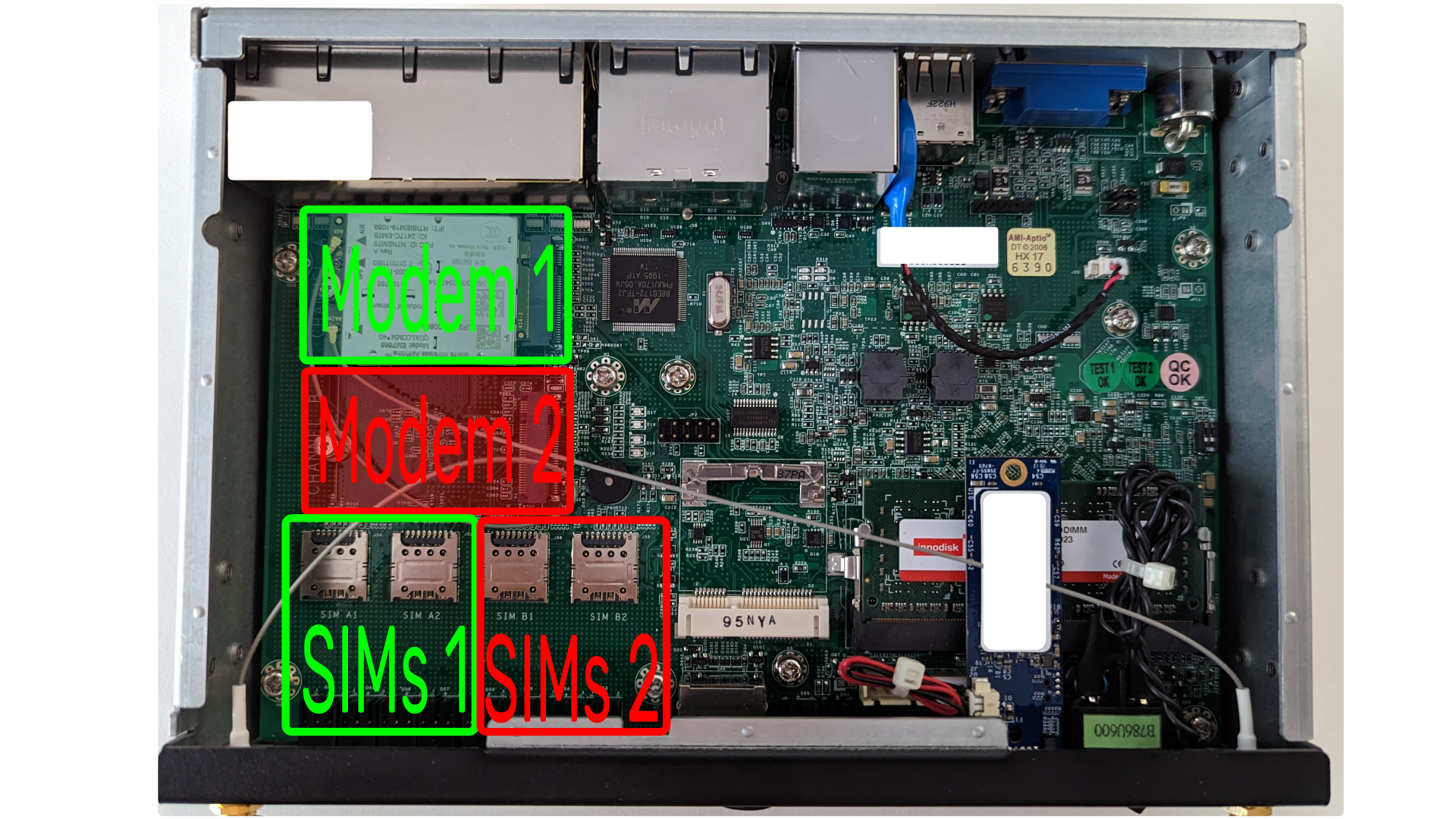Box Contents
The unit is shipped with some accessories:
1 x Power Supply
1 x Set of rack mounting brackets
Set of antennas (if the unit was shipped with 5G/4G modem or Wifi)
The Bold SR is shipped with one of two default configurations. Out-of-Band profile or Gateway profile.
For this use case, it is assumed the unit is configured with out-of-band profile.
Insert SIM cards
Ensure the device is powered off.
Open the Nodegrid box. As shown, insert SIM cards into SIM Slot 1 and SIM Slot 1
Replace the cover with the provided thumbscrews

Connect devices
Connect the device to an existing router. Connect the management interfaces via netS1-4 or console connection. After the devices are connected, the device can be powered on. The unit boots and connects to zpecloud.com or zpecloud.eu depending upon the region.
Connect ETH0 to an existing router or firewall. The device gets an IP address via DHCP and is accessible via that IP address on the local network.
Connect any IP-based management interface to one of the available network ports (netS1-4)
Connect any console management connection to any serial ports (port1-8)
Connect any sensor (i.e., Temperature and Humidity Sensor) to an available USB ports
Connect the 4/5G antennas to the unit.
Network connectivity
Nodegrid Bold SR, ships in two default configurations, which define different layouts for network access. The default configuration is called "Out of Band" profile and is designed for internal deployments, with no default protection on any of the predefined network interfaces. The 2nd profile ("Gateway" profile) differentiates clearly between WAN and LAN interfaces and provides base security for all WAN interfaces. Both profiles provide a default out-of-the-box that can be fully customized and adapted to customer needs.
Network Connectivity best practice
The network interface ETH0 should always be connected to an upstream network that provides internet access. This can be an internal network management network or a DMZ which is protected by an upstream firewall or router. Target devices should be connected through netS1-netS4.
Users can connect locally for the first time to the device and to identify the default profile which is active on the appliance
Out-of-Band Profile
In this profile, ETH0 is a management port and LAN port. Administrators access the device through this interface. The device can use this interface for internet connectivity through an existing router or firewall.
Ports netS1-4 provide a dedicated out-of-band network for management interfaces from firewalls, routers, switches, Rack PDUs, UPS, and more. The 4G/5G connection is a resilient network connection to the site if the primary link through ETH0 is unavailable.
Gateway profile
For this profile, the unit acts as an EDGE, IoT, or branch gateway. ETH0 is used as a WAN interface. By default, no direct inbound connection through this interface is possible.
Ports netS1-4 provide a dedicated LAN network. The device acts as a DHCP server on the LAN ports. Administrators can access the system locally through any of the LAN ports. The 4G/5G connection acts as a secondary or backup internet connection.


